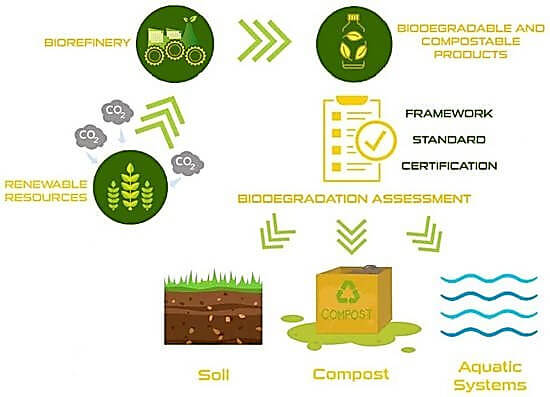What are polymers/plastics? Learn about their differences, types, and environmental impacts!
What is polymer? Definition and structure of polymer
Plastic is actually a high molecular polymer, also known as polymer materials and the polymer is a long chain molecule made up of repeating chemically distinct units called monomers. These monomers are linked together by covalent bonds, which involve the manipulation and sharing of valence electrons. The length of the polymer chain and its molecular weight depend on the number of linked, repeating units and their corresponding molecular weights. Polymers can consist of tens of thousands of individual monomers in a single chain, and many individual polymer chains are required to form a physical product.

The International Union of Pure and Applied Chemistry (IUPAC) defines a polymer as a substance made of large molecules characterized by the multiple repetition of one or more species of atoms or groups of atoms (monomers or constitutional units) linked covalently. This repetition is sufficient to provide a set of properties that do not vary markedly with the addition or removal of one or a few of the constitutional units. Polymers and macromolecules are often considered synonyms, although some authorities distinguish between them based on the repetitive nature of the monomers.
Polymers are large macromolecules where monomer molecules bind to each other in long chains. There may be several thousand monomer molecules in a single polymer chain.
Classification of polymers: Natural Polymers vs. Synthetic Polymers
Characteristics and applications of Natural polymers
Natural polymers have been used by humans since ancient times for various purposes, including making tools, weapons, clothing, and shelter. Some common examples of natural polymers include:
- Wood: Used in construction and furniture.
- Rubber: Used in various applications, including tires and footwear.
- Silk: Used in textiles.
- Cotton: Another textile fiber.
- Leather: Used in clothing and accessories.
- Paper: Used for writing and packaging.
- Proteins: Found in animal hooves, skin, hair, tendons, and other biological structures.
- Nucleic acids (DNA and RNA): Essential for genetic information storage and transfer.
- Cellulose: The major component in wood and paper.
Advantages and applications of Synthetic Polymers (plastics)
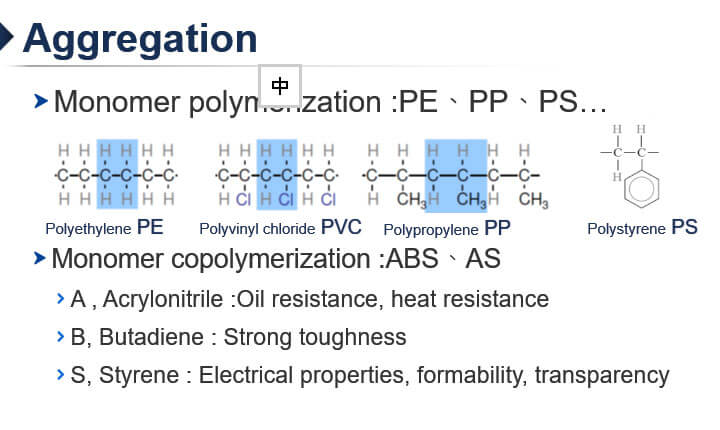
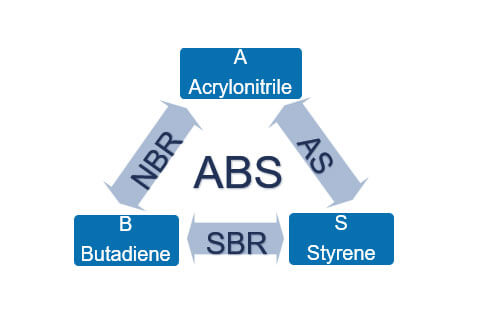
Synthetic polymers were developed to meet commercial needs that natural polymers could not fulfill. These polymers can be engineered to have a wide range of properties. These materials need to go through the steps of artificial cracking of crude oil, refining monomers, synthesizing monomers, and polymerizing different monomers before they become common polymer plastics. Some common examples of synthetic polymers include:
- Polyethylene (PE): Used in packaging, containers, and bottles.
- Polypropylene (PP): Used in automotive parts, textiles, and packaging.
- Polystyrene (PS): Used in foam products, containers, and insulation.
- Polyvinyl chloride (PVC): Used in pipes, cables, and clothing.
- Polyethylene terephthalate (PET): Used in beverage bottles and food packaging.
- Polytetrafluoroethylene (PTFE): Known as Teflon, used in non-stick cookware.
- Polyamide (Nylon, PA): Used in textiles ,automotive and industrial applications.
- Polyester: Used in textiles and packaging.
- Polyurethane (PU): Used in foams, coatings, and adhesives.
These examples illustrate the diversity and utility of both natural and synthetic polymers in various applications.
The impact of polymers/plastics on the environment: plastic pollution and recycling challenges
Compared with synthetic polymers, natural polymers are more biodegradable and come from renewable resources, which helps reduce dependence on fossil fuels and lowers carbon footprint. In addition, natural polymers do not accumulate in the environment like synthetic polymers, and most of them will decompose into harmless substances, thereby reducing the impact on the ecosystem.
Compared with synthetic polymers, natural polymers are more biodegradable and come from renewable resources, which helps reduce dependence on fossil fuels and lowers carbon footprint. In addition, natural polymers do not accumulate in the environment like synthetic polymers, and most of them will decompose into harmless substances, thereby reducing the impact on the ecosystem.
Effects of synthetic polymers (plastics) on the environment
- Longevity and Stability:
Synthetic polymers are often designed for longevity and stability under extreme conditions. This durability, while beneficial for long-term applications, leads to slow decomposition under natural conditions, causing significant environmental issues due to plastic accumulation. - Microplastics:
Synthetic polymers will form microplastics, which are produced by manufacturing small plastic parts, microplastics used in common facial cleansers and hand soaps for enhanced cleaning, or plastic particles that are degraded and broken in the environment. These microplastics will accumulate in the ecosystem. These microplastics can be ingested and enter the bodies and tissues of organisms, posing health risks to wildlife and potentially entering the human food chain. - Recycling Challenges:
The stability and durability of synthetic polymers make recycling challenging. Effective recycling requires complete collection, sorting, purification, and treatment of polymer waste. Current and upcoming recycling methods aim to address these challenges, but they are not yet fully effective. - Biodegradation:
Most synthetic polymers do not biodegrade easily. While some research focuses on enzymatic degradation (e.g., PET esterase for PET), many synthetic polymers like polystyrene and polyamide lack defined enzymes for effective biodegradation.
Durability and biodegradability: Synthetic polymers vs Natural polymers
- Synthetic Polymers: Durable, stable, and resistant to degradation, leading to significant environmental issues such as plastic accumulation and microplastics. Recycling and biodegradation are challenging but necessary to mitigate their impact.
- Natural Polymers: More biodegradable and derived from renewable resources, making them more environmentally friendly. They decompose more readily and do not accumulate in the environment as synthetic polymers do.
Biodegradable plastics: the development of environmentally friendly solutions
Biodegradable plastics refer to plastic materials that can be decomposed by microorganisms under certain conditions. Common biodegradable plastics include polylactic acid (PLA), thermoplastic starch, etc. These materials can reduce environmental pollution and gradually become an environmentally friendly alternative to traditional plastics.
Environmental Impacts of Biodegradable Plastics
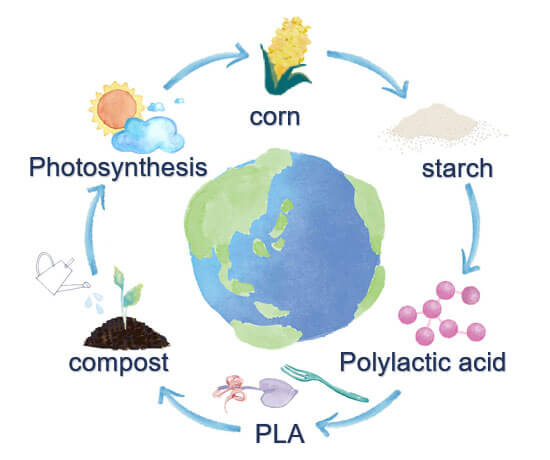
- Biodegradability:
Biodegradable plastics are designed to break down more easily under specific conditions, such as industrial composting. This reduces their long-term environmental impact compared to synthetic polymers. - Renewable Resources:
Many biodegradable plastics are made from renewable resources, which can help reduce the carbon footprint associated with their production. Examples include polylactic acid (PLA) and thermoplastic starch. - Composting:
Biodegradable plastics can be composted in industrial facilities where conditions such as higher temperatures and microbial activity facilitate faster degradation. However through the process of biodegradation, there are strict conditions for degradation, they may not degrade effectively in natural environments, leading to potential accumulation if not properly disposed.
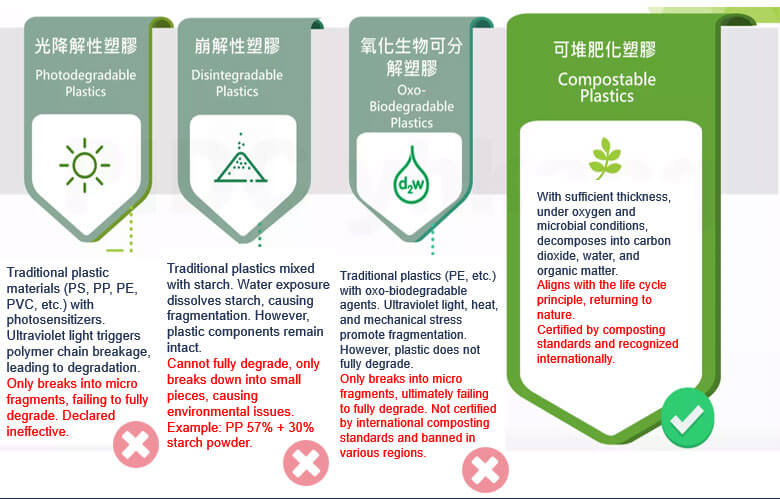
- Microplastics:
While biodegradable plastics are designed to break down, improper disposal can still lead to the formation of microplastics if they do not degrade completely. This can occur if they are not subjected to the appropriate composting conditions. - Misleading Claims:
Some products marketed as biodegradable may contain additives that only cause partial degradation, resulting in small plastic fragments rather than complete decomposition. This can be misleading and contribute to environmental pollution.
Comparison of the environmental impacts of synthetic polymers (plastics) and biodegradable plastics
- Synthetic Polymers: Highly durable and resistant to degradation, leading to significant environmental issues such as long-term accumulation and microplastic formation. Recycling is challenging and often inefficient.
- Biodegradable Plastics: Designed to break down more easily under specific conditions, reducing long-term environmental impact. Made from renewable resources and can be composted in industrial facilities. However, they may still contribute to microplastic pollution if not properly disposed of and can be subject to misleading claims about their biodegradability.
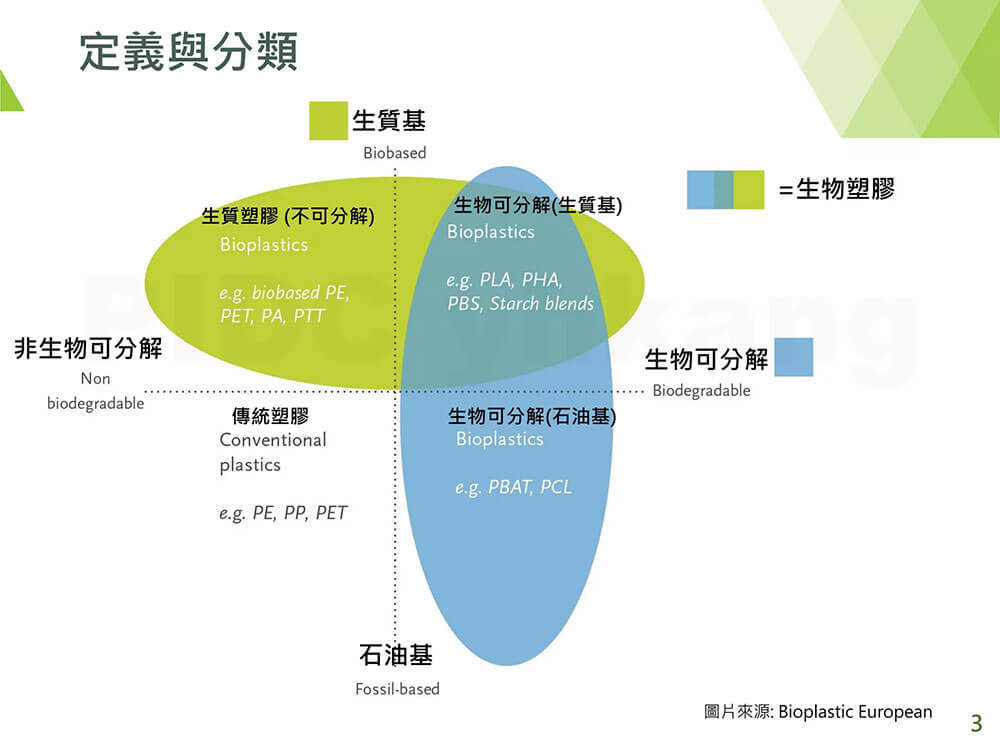
Overall, biodegradable plastics offer environmental benefits over synthetic polymers, particularly in terms of reduced long-term pollution and the use of renewable resources. However, proper disposal and composting are crucial to realizing these benefits fully.
Role of Consumer Behaviors in the Effectiveness of Biodegradable Plastics
- Proper Disposal:
The effectiveness of biodegradable plastics in reducing pollution heavily depends on proper disposal by consumers. Biodegradable plastics need to be disposed of in appropriate composting facilities to ensure they degrade as intended. If consumers dispose of these plastics in regular trash or litter them, they may not encounter the conditions necessary for biodegradation, leading to persistent pollution. - Awareness and Education:
Consumer awareness and education are crucial. Many consumers may not understand the specific conditions required for biodegradable plastics to break down. Educating consumers about the importance of disposing of biodegradable plastics in designated composting facilities can significantly enhance their effectiveness in reducing pollution. - Avoiding Misleading Labels:
Consumers need to be cautious of misleading labels. Some products marketed as biodegradable may not fully degrade under natural conditions and can still contribute to microplastic pollution. Understanding and recognizing certified labels and standards for biodegradable plastics can help consumers make informed choices. - Behavioral Changes:
Shifts in consumer behavior, such as reducing single-use plastics and opting for products made from biodegradable materials, can drive demand for more sustainable options. This can encourage manufacturers to produce more environmentally friendly products and invest in better waste management infrastructure. - Legislation and Regulation:
Consumer behavior can influence legislation and regulation. When consumers demand more sustainable products and proper waste management systems, it can lead to stricter regulations and better infrastructure for composting and recycling biodegradable plastics.
The future of polymers/plastics: continuous innovation and sustainable development
- Proper Disposal: Ensuring biodegradable plastics are disposed of in appropriate composting facilities is essential for their effectiveness.
- Awareness and Education: Educating consumers about the conditions required for biodegradation and the importance of proper disposal can enhance the effectiveness of biodegradable plastics.
- Avoiding Misleading Labels: Recognizing certified labels and standards helps consumers make informed choices and avoid products that may not fully degrade.
- Behavioral Changes: Reducing single-use plastics and opting for biodegradable materials can drive demand for sustainable options and improve waste management practices.
- Legislation and Regulation: Consumer demand for sustainable products can influence legislation and lead to better infrastructure for managing biodegradable plastics.
Consumer behaviors play a pivotal role in the effectiveness of biodegradable plastics in reducing pollution. Proper disposal, awareness, and informed choices are key factors that determine the environmental benefits of these materials.
